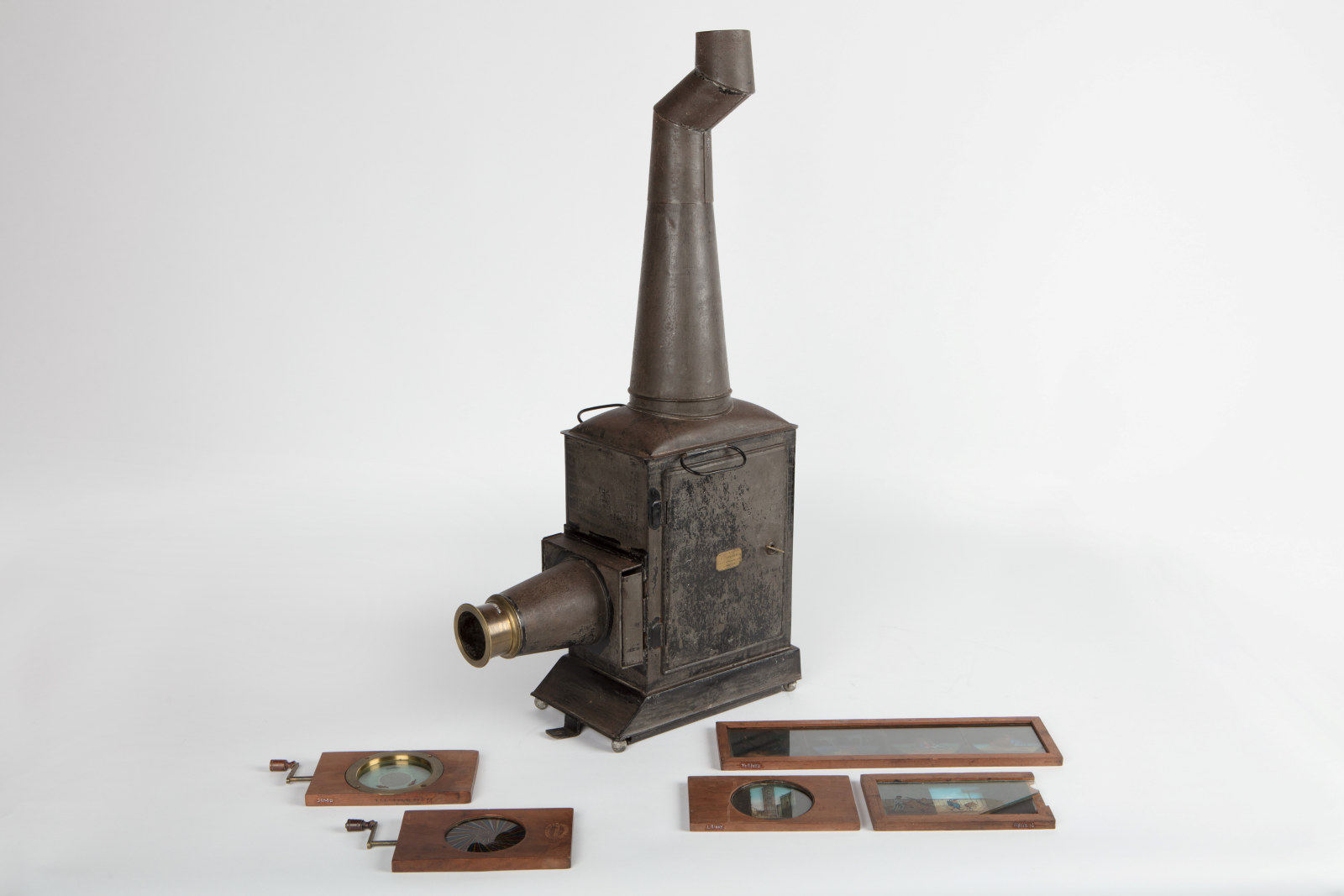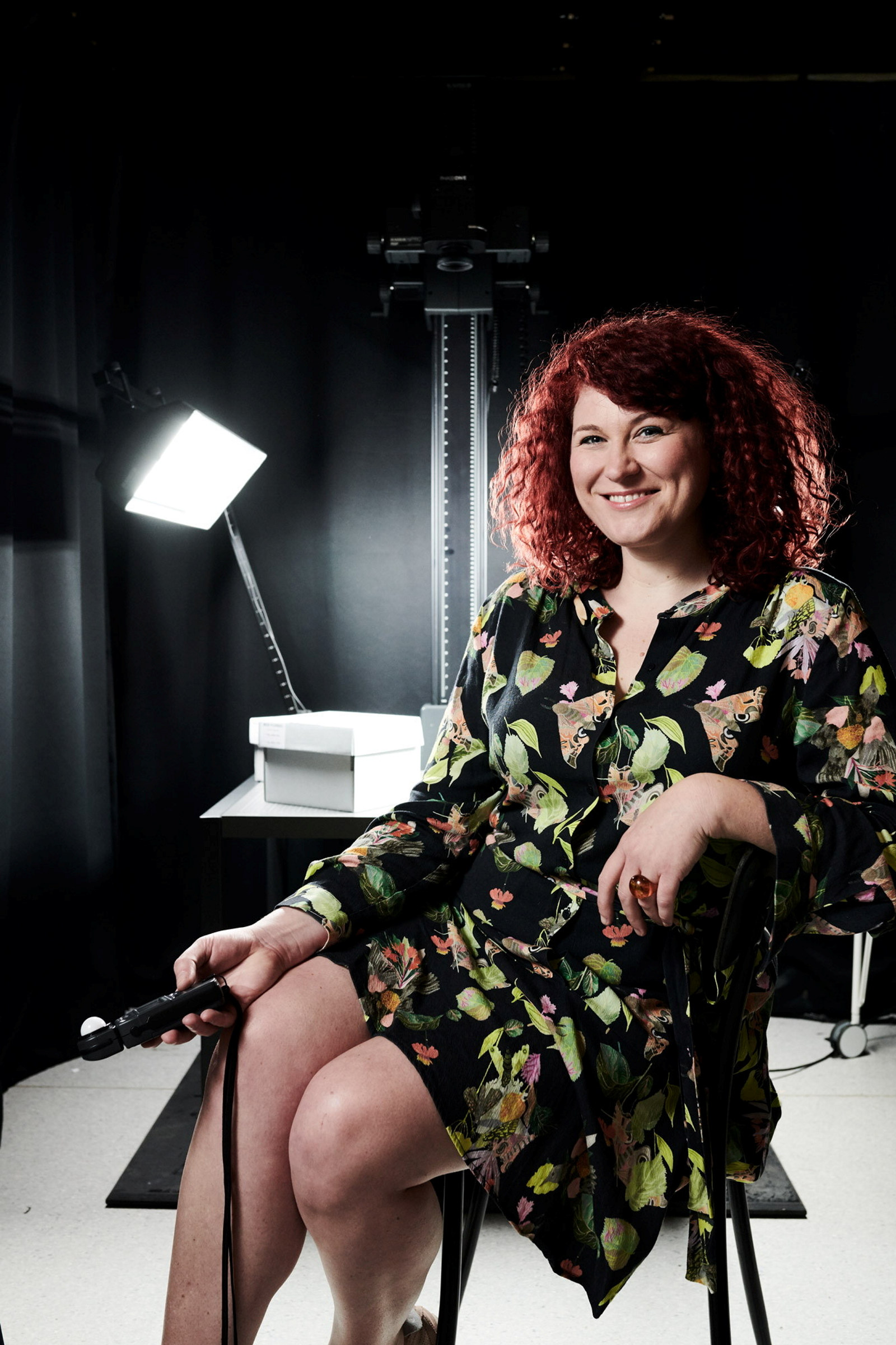1960s psychedelia at Rouse Hill House
In a short experimental period of music making, the talented young John Terry combined radical musical ideas with abstract imagery and the soundscape of Rouse Hill Estate.
In 1967, 22-year-old John Buchanan Rouse Terry was living at Rouse Hill House with his grandmother Nina Beatrice Terry, nee Rouse. The young man was a sixth-generation descendant of Richard and Elizabeth Rouse, who built the house in the early 19th century, and he lived among the accumulated possessions of 140 years of the family’s life there. A musician and aspiring composer, John was a graduate of the Sydney Conservatorium High School and a Fellow of Trinity College London, but his earliest musical influences came from Nina. Long before he learnt to read music, he used to watch for hours as she played the piano, trying to imitate her style and play the same notes.

New influences
In the mid-1960s, John worked in the sound effects department at the ABC. There he met the composer Richard Meale, who introduced him to the music of contemporary avant-garde composers like Karlheinz Stockhausen and John Cage. John connected these new musical influences with his own music and with the soundscape of Rouse Hill, collaging recordings made at the property of sheep, geese and dogs, servants’ bells from the kitchen, a music box (purchased in 1860), family voices and toy trumpets. He added percussion by tapping Nina’s collection of fine glassware – sometimes he tapped too hard.
John was also interested in visual effects. Since childhood he had been fascinated by a magic lantern projector made in the 1860s and a collection of hand-painted lantern slides kept in the house. Now he experimented with combining sound and visuals into a cohesive, immersive performance, and these turned into ‘happenings’, initially at a restaurant called the Blue Kettle in Castle Hill.
‘A visual and aural bombardment’
John designed and performed his multimedia shows with several collaborators, particularly his friends Anne Harris, a school music teacher, and artist Francis Good. The trio prepared the musical and visual material at Rouse Hill House and in Cremorne on Sydney’s north shore, where Anne lived. Likely inspired by the antique magic lantern, they created abstract imagery inside 35mm slide mounts and on 16mm film. Hundreds of slide mounts were filled with colourful layers of paint, plastic, paper, glue and string, sandwiched together and sealed. The trio also painted blocks and strokes of colour on metres of film to create moving abstract images. To try out new ideas in music, lighting and projection, John dressed the arcade at Rouse Hill House as a theatre space, hanging fabric around the walls to create a ‘cinerama’ wraparound effect.
In August 1967, the ‘Beatle-like, six-foot tall’1 John presented a series of concerts, now called ‘John Terry’s Psychedelic Music’, in a new venue: the Wayside Chapel Theatre in the heart of Kings Cross. As The Sydney Morning Herald described it: ‘coloured slides of abstract images and an abstract movie were shown on a white wall to the accompaniment of weird lighting, tape recorded organised electronic sounds, Mr Terry playing first the piano and then the electric organ, and then both at once’. Anne Harris played a tone generator and sang ‘in way out, ethereal, unconventional and unrecognisable tones’, while Francis Good worked the lights.2
John described the shows as ‘visual and aural bombardment’.3 Like the random assembly of the unique handmade slides, no two performances were alike.
Impressed by the concerts at the Wayside Chapel, Professor Robert Peart, head of the Music Department at Sydney University and a member of the Sydney branch of the International Society for Contemporary Music, invited John to present a psychedelic recital at the Cell Block Theatre, Darlinghurst, in November 1967. For this concert John added a jazz quartet, a string trio and bagpipes.4
A mirror ball in the Rouse Hill larder
John’s concerts drew the interest of a journalist from Woman’s Day, who interviewed him at Rouse Hill House in 1967. She described the multitude of instruments, electronic equipment, irregularly shaped homemade mirror balls and household items that filled John’s studio in the former larder.
John explained that his experimental music was inspired in part by his upbringing in the historic and eclectic surrounds of Rouse Hill House: ‘I think it’s rather Australian music because I’ve taken so many of my sounds from the wide spaces we have here at Rouse Hill. I like to think, too, that as my ancestors were pioneers I am doing my own type of pioneering – in music’.5
The journalist also spoke to Nina, who noted: ‘I’m afraid John’s music is a bit beyond me, but I think I could get used to it and enjoy it’.6 Nina died in August 1968, aged 93, and soon afterwards John moved out of Rouse Hill House. His career moved on from psychedelia as he undertook further study, completing a Doctorate of Creative Arts and then teaching, performing and composing music across a number of platforms and media. His musical interests extended from jazz to electronic and classical, and he was an especially talented pianist with brilliant improvisational skills.
‘Rouse Hill Psychedelia’
Rouse Hill House and its intact contents were bought by the NSW Government in 1978 and transferred to the custody of the then Historic Houses Trust (HHT; now Museums of History NSW) in 1987. In April 1998, at the invitation of then HHT curator Lynn Collins, John re‑created his performances of the late 1960s in a show called ‘Rouse Hill Psychedelia’. For one night only, the arcade at Rouse Hill House was again filled with John’s psychedelic sounds and images. For this performance he incorporated the 1860s magic lantern and its slides, alongside the handmade slides, painted film, and voice and sound recordings from the 1960s, and accompanied these with the servants’ bells, crystal glassware, dinner gong, music box and toy trumpets. Other sounds used in the performance were an electric organ, chimes, a bell tree, copper utensils and a melodeon (a kind of accordion).
John’s friend and mentor Richard Meale sent a fax saying he was sorry he couldn’t be present for the ‘long overdue rerun of one of the most original evenings I ever experienced, that night so long ago when you introduced us, for the first time in Australia, to the new art form of psychedelics …’7
A video recording of John’s 1998 concert in the arcade, now held by the National Film and Sound Archive, provides an invaluable glimpse of the psychedelic recitals John pioneered early in his career. It also provides insight into the family interaction with the antique and handmade collection that remains at the property. This recently rediscovered footage and the contextualisation of these museum objects is vital for a contemporary appreciation of the innovation and legacy of John Buchanan Rouse Terry, who died on 8 May 2018.
Footnotes
- Jock Veitch, ‘Total sound you can see’, The Sun-Herald, 3 September 1967, p104.
- ‘Psychedelic – what’s that?’, The Sydney Morning Herald, 30 August 1967, p14.
- Michael Symons, ‘Jazz Happening 67’, The Sydney Morning Herald, 28 August 1967, p8.
- ‘A concert of mind bending’, The Sydney Morning Herald, 22 October 1967.
- Susan Dunlop, ‘The Space-Age sound’, Woman’s Day with Woman, 6 November 1967, p118.
- Ibid.
- Transcript of discussion in film Psychedelia evening: reconstruction of artist John Terry’s 1960s experimental film, sound and light performance, 17 April 1998, held by National Film and Sound Archive.
Published on
